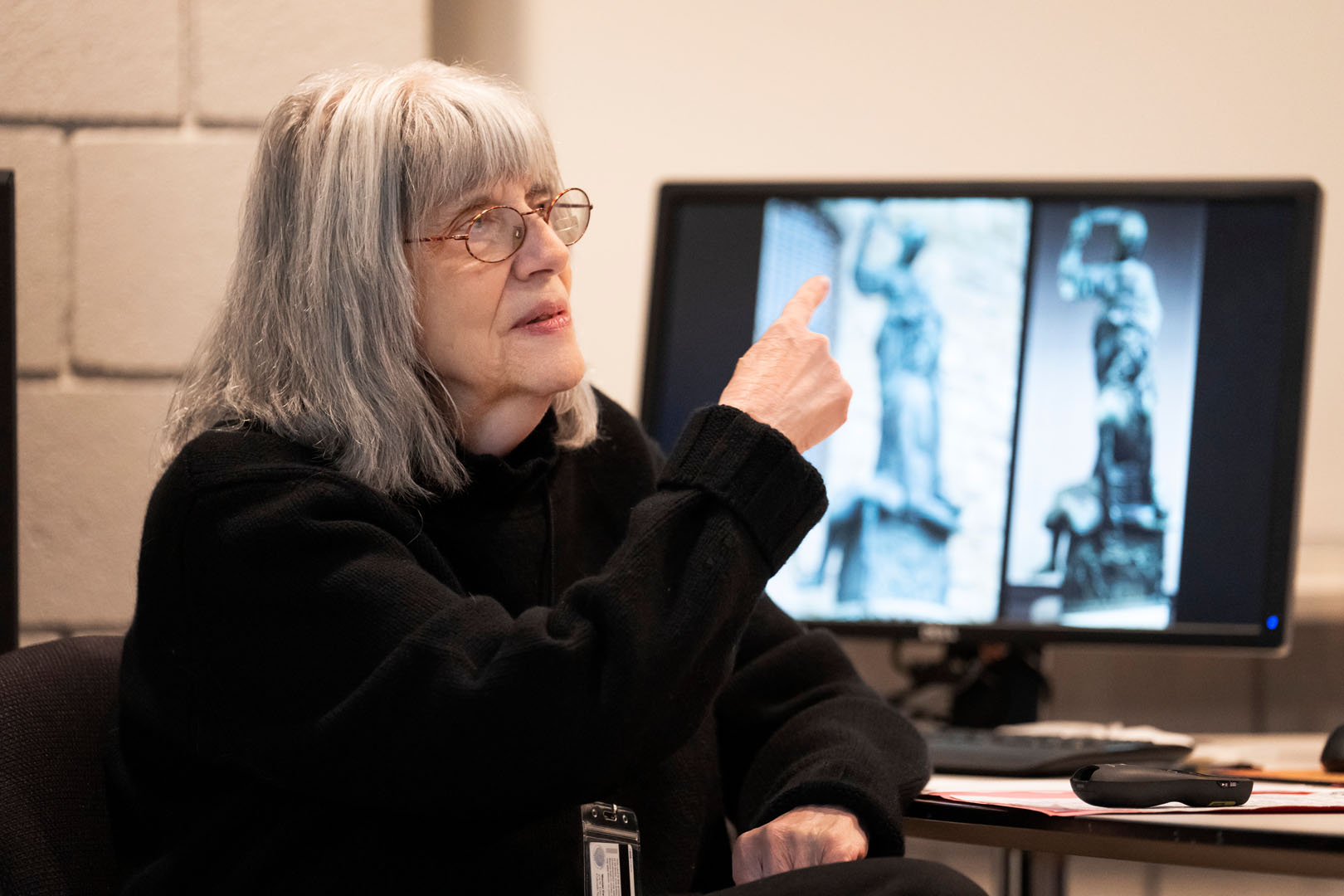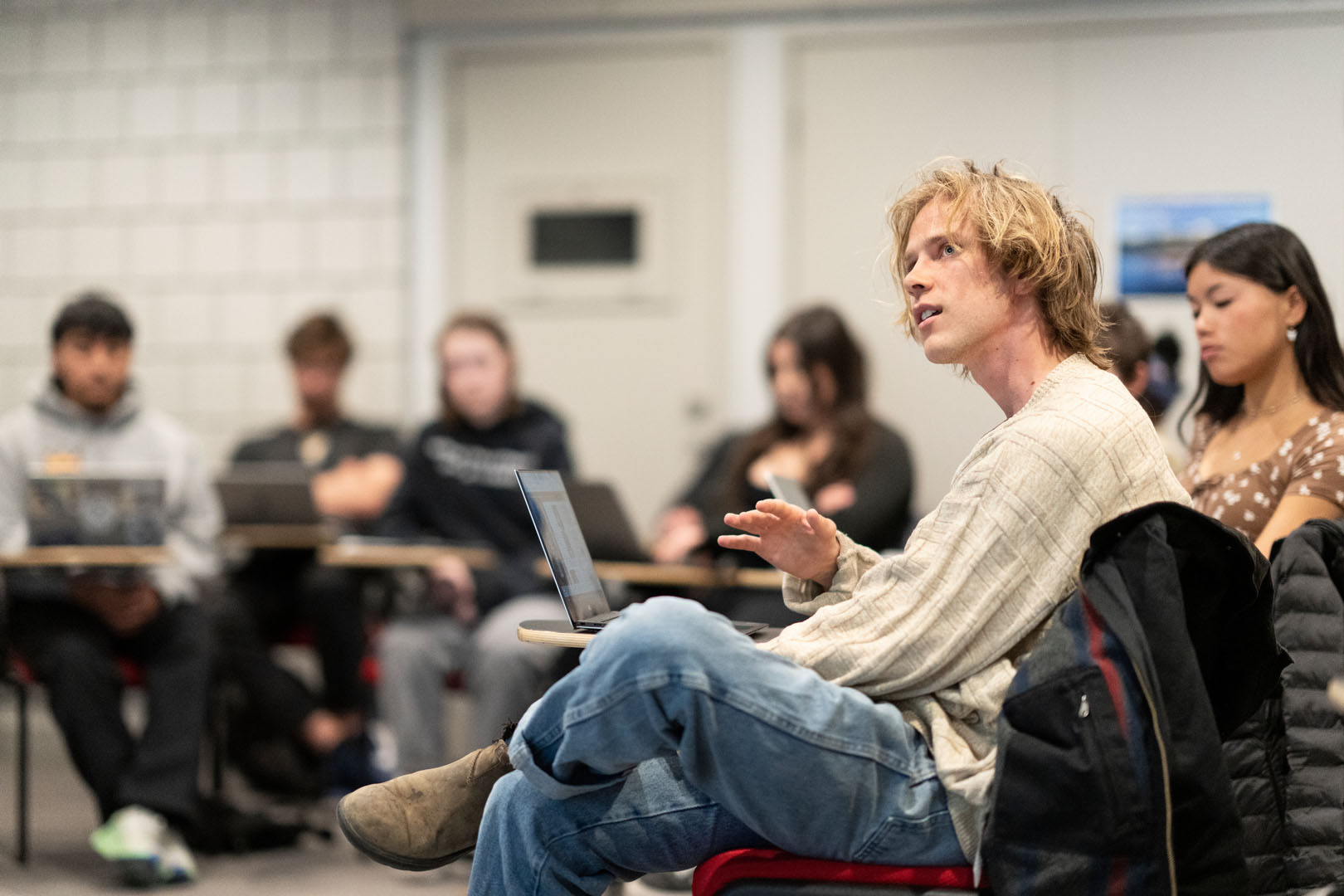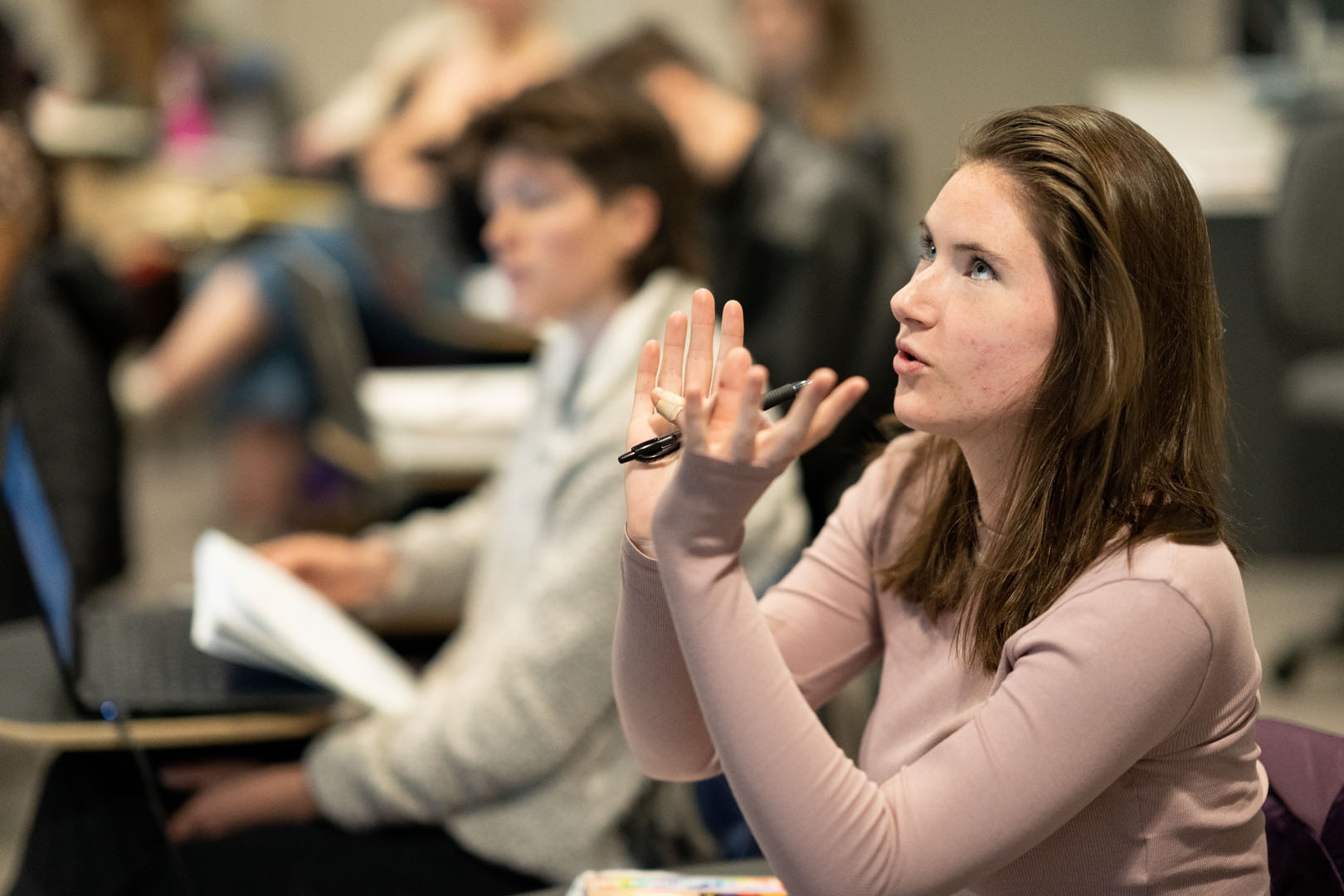March was Women’s History Month, and last block, 24 students in the Block 7 Women in Art class studied women artists in Western Europe and America from ancient to modern times. The class sought to answer several important questions, including why there have been so few women artists who are considered “great,” and what social and historical barriers women face in art.
“The issues that arise from the study of both the art of women and the images of women in art really provide insights into women’s roles in history,” says Gale Murray, class instructor and professor of art, who has taught at CC since 1976. “Many of those issues are still relevant today and students of any gender can relate them to their own lives and come to understand the way the past illuminates the present.”
The class critiqued the standard hierarchy of art, which celebrates male heroics while downplaying women’s specialties.
“My favorite part of the class was comparing and contrasting famous pieces by women and men, and looking at why the woman's version is different,” says Katherine Moynihan ’23, a sociology major and journalism minor. “Sometimes you can tell when a scene is depicted by a woman by the way she paints it. For instance, ‘Judith and Holofernes’ by Gentileschi is vastly different from other renditions of ‘Judith.’ She is more a vengeful and emotional than the average ‘Judith.’ And then you ask, why is that? Which social conditions caused these style differences? This class has been a real interdisciplinary moment for me.”
Moynihan adds that one of the reasons it is so important to celebrate women’s art is because women were kept out of proper art training for centuries, which makes what women were able to create even more impressive.
“So many of the classes that discuss art history focus on male artists. This is the case in part because most artists of note, and those who were recorded, were men,” says Alyssa Sorensen ’25, an art studio major and education minor. “I think this class is especially useful [because] it illuminates not only women artists that were previously lost to history, but also the reasons why many women could not cultivate their creative talents. Whether it be due to the way that art history is written and taught, social factors that kept women repressed, or a neglection to recognize or active degradation of women artists in modern recorded art history.”
The highly in demand course is a favorite among students, quickly filling with art majors and non-art majors alike.
“It’s empowering to view and discuss these women who succeeded within oppressive circumstances and pushed boundaries within exclusively male spaces,” says Isabel Bragg ’26.
“I loved learning about different famous pieces in history that were done by women and misattributed to men.”
Beyond the art and artists, the class also examined the way the lack of women’s art history coverage represents a broader, societal issue.
“In a very broad and general way art often constitutes a vector of culture – if we wish to acknowledge the ways that women exist in our society, are perceived by society, and work to change and influence the society they are in then we also need to study women’s art. If there is an absence of women’s art then we need to wonder why,” says Shea Li Dombrowski ’23, a philosophy major and English minor.
Dombrowski notes the importance of acknowledging the history of women passing down knowledge to future generations, specifically in terms of art techniques, histories, and traditions.
“This not only empowers women who wish to become artists today, but gives the feminist movement in art the prestige and weight of tradition, history, legitimacy, and continuity in a culture which often prizes those things, whether or not it should.”






